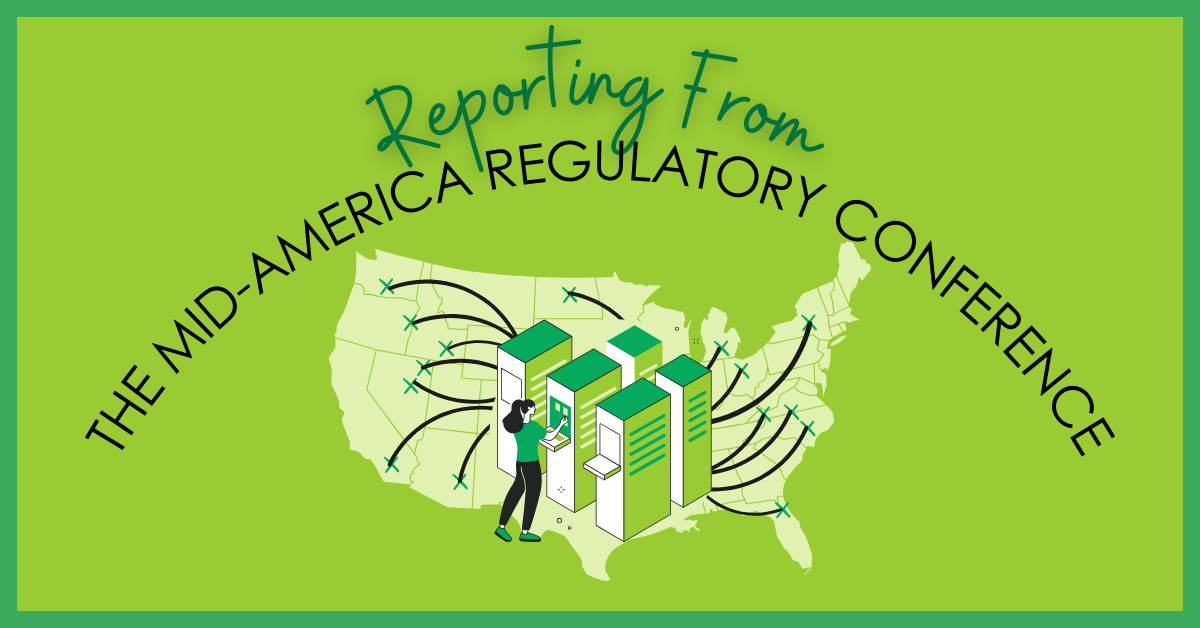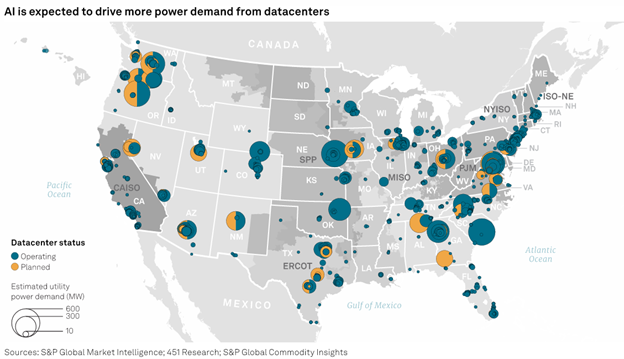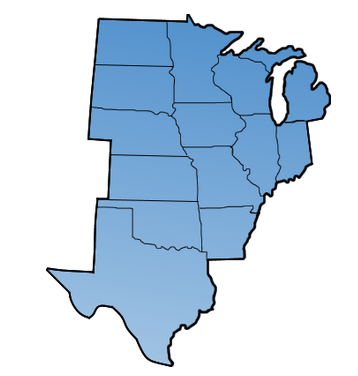
I attended the Mid-America Regulator Conference in Minneapolis last week. This post features issues of the day presented by utilities, commissioners, intervenors, technology providers, and sundry stakeholders.
Load Growth
Back in the day, we canoed the rivers and streams of Northern Virginia, especially after significant rainfall, when the water was high and running fast, which made it interesting. Let’s just say my canoeing skills would be the equivalent of graduating from the bunny slope on a ski resort. For the latter, I learned to snowplow to slow down, and for the former, don’t take the paddle out of the water when things get dicey, for that gets the canoe going sideways and capsizing. I would say that’s where we’re headed for the electric grid. Paddles in the water, please.
Load growth forecasts are set to return to historical averages not seen since before 2000. Data from the Energy Information Administration indicate the annual electricity load growth from 1950 to 2000 was 5.1% annually, and from 2000 through 2022, the growth was one-tenth the pre-2000 number—essentially zero.
 I sat there and thought, this is like building nuclear power plants – we have a generation of utility, regulatory, and policymakers who have never witnessed such growth. It’s like two greenhorns in the canoe rather than one greenhorn in front and the experienced pilot in the back. Things could get a little sideways. Better don the life preservers!
I sat there and thought, this is like building nuclear power plants – we have a generation of utility, regulatory, and policymakers who have never witnessed such growth. It’s like two greenhorns in the canoe rather than one greenhorn in front and the experienced pilot in the back. Things could get a little sideways. Better don the life preservers!
Closing this section, two speakers in separate sessions said, “We’re not going to build our way out of this.” They are likely to be correct because it takes the better part of two decades to build a transmission line, from when the need is recognized until it moves electrons.
Data Centers
An early panel featured experts on hyperscale data centers and the challenges and opportunities they represent for the electric grid. Hyperscale data centers are defined as having at least 5,000 servers with a load of at least 100 MW.
Below are the existing and planned data center growth per S&P and the MARC footprint of states. MARC’s footprint is almost identical to that of the combined Mid-Continent Independent System Operator, Southwest Power Pool, and Electric Reliability Council of Texas = MISO, SPP, and ERCOT.

 Last week, I noted the data center load on the grid is anticipated to double to a total of 50 GW in 2030, which would be roughly 6.5% of the nation’s peak load and 10% of electricity consumption[1].
Last week, I noted the data center load on the grid is anticipated to double to a total of 50 GW in 2030, which would be roughly 6.5% of the nation’s peak load and 10% of electricity consumption[1].
According to Ryan Ling, President of Xcel Energy’s Minnesota, South Dakota, and North Dakota territories, data center owners and operators seek low electric rates and reliability and are willing to compromise their historic insistence on 100% carbon-free power to get it. To see why they want low rates, Aaron Tinjum, energy policy and regulatory affairs lead for the Data Center Coalition, noted that electricity costs represent 40-70% of operating costs for a data center. WHOA!
A significant issue for these giant steady loads is fair and equitable rate structures. Many hyperscale data centers have unique contracts with utilities, sometimes known as individual customer rates or ICRs.
Natural Gas
The middle of the country doesn’t share the reveries of certain corners, pockets, and regions banning natural gas. I spoke at length with a regulatory VP from a large utility. They are having challenges in one of their territories replacing 100-year-old cast-iron pipe because of political issues. They can only replace the piping in emergencies. I said, “Wow. That sounds risky and foolish” – head nods in the vertical orientation from around the table.
One speaker from the American Biogas Council described the millions of tons of bio-waste available for producing renewable natural gas. That made me think of two things. Doesn’t renewable biogas emit carbon dioxide when burned like natural gas? Second, it’s like wind, solar, corncobs, and stover. There may be millions of tons of waste available for processing, trillions of incident solar megawatts, and thousands of quads of kinetic energy in wind, but harnessing and processing them and making them available 24/7/365 is difficult and, therefore, expensive.
On that note, a South Dakota commissioner noted wind generation provides as much as 88% of electricity in the state over 24 hours but as little as 0.3% on June 6, 2023. She must have shared notes with the Southwest Power Pool guy I quoted last year on the same day. Amazing.
Later in the session, another panelist from an Indiana utility flatly stated that renewable natural gas isn’t scalable. Again, I compare it to processing corncobs and stover into ethanol as a replacement or supplement to gasoline. It’s not dense and comes with enormous material handling challenges and logistics.
Technology
Doug Scott, Commissioner of the Illinois Commerce Commission, moderated a panel on emerging technology and nuclear power. He said [paraphrasing], “Utility commissions are known for moving at glacial speed, but that’s a disservice to glaciers.” ???? It is a thankless job, to be sure. I wrote that we need innovation, and we need it now.
Panelist Jorgen Festervoll, CEO of Heimdall Power, introduced their volleyball-size widget that measures transmission-line capacity. Heimdall claims their “magic ball” increases or allows grid operators to increase transmission line capacity by as much as 40% and 30% on average. Powerline physics is not my area of expertise, but I do know that capacity varies with line temperature.
According to Heimdall, ambient-adjusted ratings for transmission capacity are crude, not accounting for varying wind direction and speed, for example. Their device determines actual dynamic line rating, which, for all I know, could be as simple as using actual conductor temperature to determine carrying capacity.
Festervoll groaned about the need for pilots with proven technology, but he said he learned his lesson not to describe what the Europeans are doing (installing magic balls) and that American utilities should follow. I have been privy to that advice for several years. I understand the utilities’ perspective here. “You want me to trust your volleyballs to protect my billion-dollar transmission line and associated megatons of transformers that take three years to build, ship, and install?”
Conclusions
The conference summarized many of the blog posts I’ve written in the last year. Many challenges are ahead, creating opportunities for our 120-year-old electric grid and associated business models. Utilities are being pushed and pulled in dozens of directions, and with that, commissions have more challenges than ever. There is plenty to keep writing about!
[1] Assuming an 80% load factor for data centers versus about 50% for the rest of the grid.
